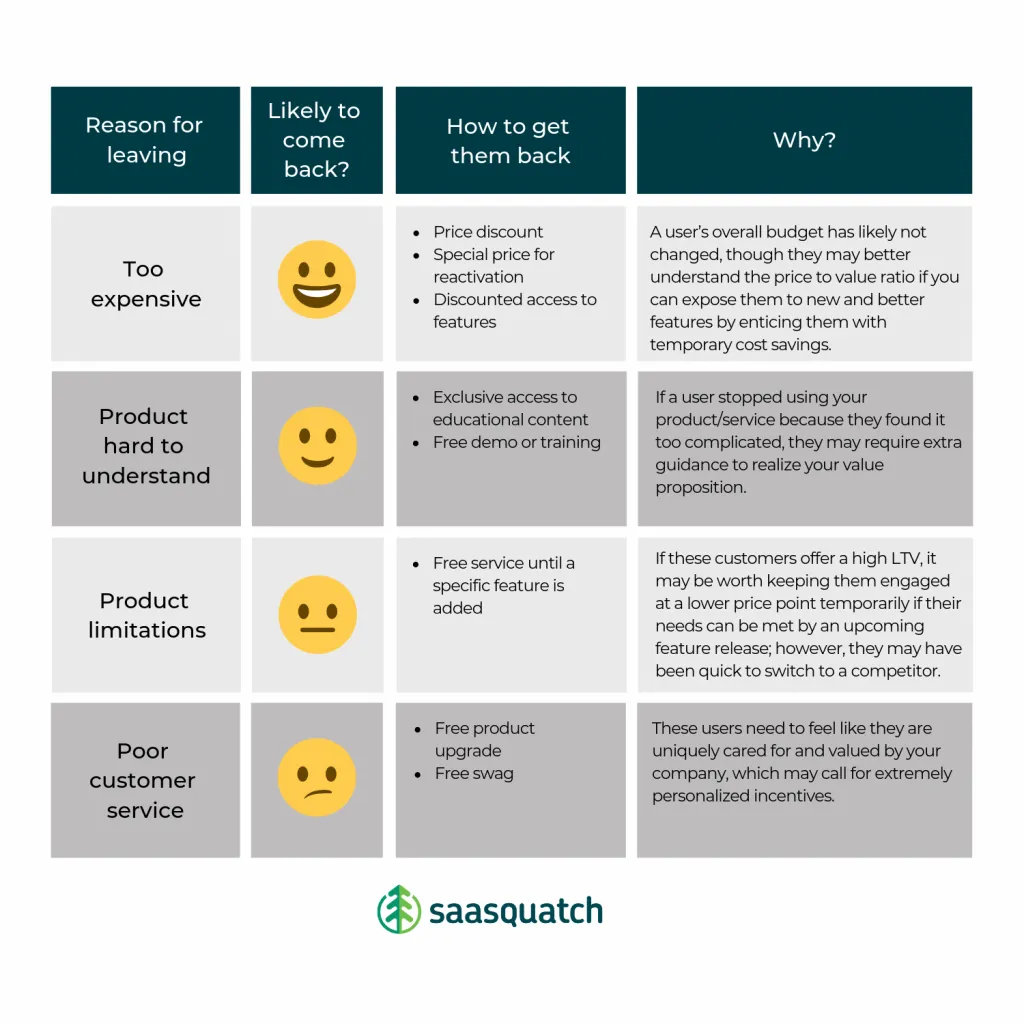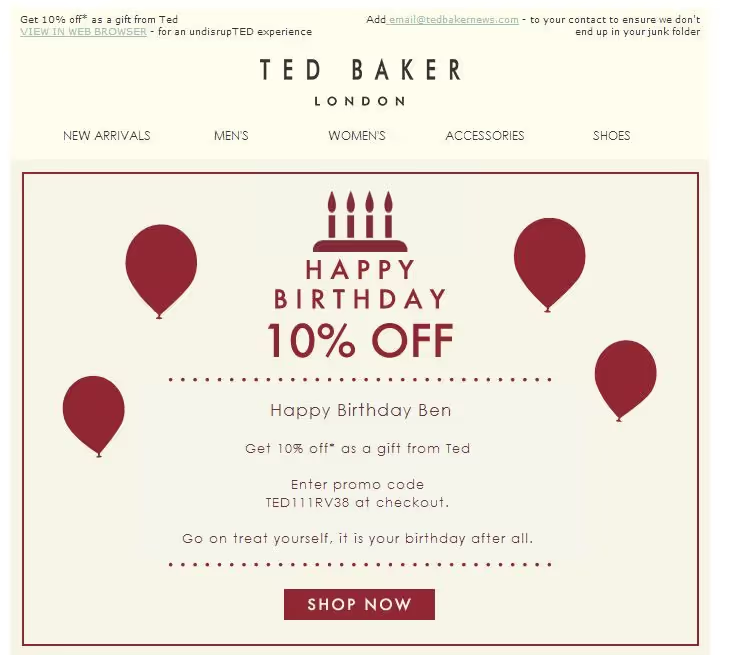Loyalty Programs for Customer Retention
If you had a leaky bucket, would you try and fill it with water?
Or would you patch the holes first?
Chances are, you’d fix the bucket to prevent losing water.
Imagine now that your company is the leaky bucket, and the water represents your acquired customers. Do you have enough strategies in place to prevent churn, or are you focused more on continuously filling the bucket with more customers?
The lesson of this metaphor is that by ignoring the source of your customer churn, you’ll have to work tirelessly to keep the bucket full.

While loyalty programs are best implemented at every stage of the customer lifecycle, they’re well-known as a customer retention tool.
It’s why coffee shops offer punch cards and airlines offer frequent flyer points - brands want to be repeatedly chosen by every customer that they acquire.
Today we're sharing the importance of customer retention programs, and 3 loyalty programs that are the most effective for your retention marketing mix.
If your current goal is to boost customer retention, just keep reading or jump to a section:
- What is customer retention?
- How do loyalty programs boost customer retention?
- 3 Loyalty programs for customer retention
What is customer retention?
Customer retention is a measure of how long customers stay with your brand.
Your retention rate is calculated by comparing how many customers you have at the beginning of a period to how many of those customers you still have at the end of the period.
When customers can cancel their subscription, switch to a competitor, or delete their account all with a few clicks or taps, retention becomes a growing challenge for digital businesses.
A report from 2018 indicates that avoidable customer churn is costing US businesses $136 billion a year, and 30% of SaaS companies report having an unacceptable level of churn.
Improving your retention rates means giving customers a reason to stay engaged with your brand by showing that you value their business, and patching any holes in your leaky bucket.
Why is customer retention important?
While customer acquisition is considered to be the golden metric, customer retention pays off more than you might think:
- A 5% increase in retention can lead to a 25 - 95% increase in profit
- 80% of your company’s future revenue will come from just 20% of your current customers (Gartner Group)
- It costs 5-25x more to acquire a new customer than to retain an existing one
According to a survey conducted by KPMG, businesses who understand these facts believe that customer retention will be their most significant driver of revenue in the next 1-3 years, and are switching their focus accordingly:

However, too many businesses still make the mistake of circling back to acquisition efforts one a customer has made their first purchase (ie. ignoring the holes in their bucket). In fact, almost half of companies (44%) focus more on getting new customers than retaining existing users.
Why is this a problem? You can read our in-depth explanation in this article, but it’s largely due to rising acquisition costs and declining effectiveness of traditional advertising.
If you wouldn’t put water in a leaky bucket, why would you spend so much money putting users into a customer journey that they’re bound to drop out of?
Money spent to acquire customers is wasted if there are no retention strategies in place. Generally speaking, a business without a customer retention program is a business bound to fail.
You need a way to retain each customer long enough so that you recover the money you spent to acquire them, and continue to earn a profit.
Let us introduce you to one of the best retention marketing strategies: a loyalty program.
How do loyalty programs boost customer retention?
Loyalty programs help with retention in two ways:
- Help you keep your best customers
- Help you win back lost customers
1 - How do loyalty programs help you keep your best customers?
An emotional connection is the true driver of brand loyalty, and incentive-based loyalty programs are one of the best ways to show customers you value their business.
Customers who are emotionally connected to a brand have a 306% higher lifetime value, and recommend brands at a higher rate (71% vs 45%).
Plus, a study from Deloitte found that only 3% of customers will recommend a company based on shared values or principles, while 44% of customers will make recommendations based on emotional criteria, such as how much compassion, happiness, or security the user feels.
An emotional connection is created through shared positive experiences and a sense of belonging and understanding. The simple act of giving customers an incentive to thank them for their business is an excellent way to build loyalty, regardless of the incentive’s monetary value.
A study by psychologist Norbert Schwarz from the University of Michigan explained how even finding a dime is enough to put you in a good mood. He explained that "It's not the value of what you find. It's that something positive happened to you."
This means that you aren’t required to give every customer a brand new car to earn their loyalty. You just need to positively reinforce their actions by offering something in return. A customer offers their repeat business, and you offer a reward - a win-win situation to keep customers coming back.
2 - How do loyalty programs help you win back lost customers?
Studies have shown that 68% of customers will leave a business relationship if they perceive that the brand is indifferent to them.
This is a more powerful indicator than product dissatisfaction or price.
Because this churn factor is all about the customer’s perception, it’s possible that the current patches on your leaky bucket aren’t as effective as you hoped, and you need a new way to re-engage your best customers.

By leveraging historical data, you can offer relevant incentives that encourage customers to give you a second or third chance and start to build loyal habits. When you personalize these rewards based on previous purchases, demographics and preferences, you demonstrate your affinity for each individual customer’s business.
As you’ll learn below, knowing why customers left is your best tool for knowing how to bring them back. If you don’t have mechanisms in place to record this data, consider implementing exit surveys or following up to request feedback.
3 loyalty programs for customer retention
Win Back Program
As its name suggests, a win back program is used to reactivate customers who have gone quiet and stopped engaging with your brand.
It might seem strange to go after customers who seemingly have lost interest in your product anymore, but you still have a 60 - 70% chance of selling to them again. This is a favorable metric when the probability of selling to a new prospect is only 5–20%.
Depending on the nature of your product and how often you expect a purchase, a win back program can target many different segments, such as:
- Customers who haven’t made a purchase in six months
- Customers who haven’t logged in this month
- Customers who have cancelled their subscription
- Customers who haven’t made a referral
As an example, meal-kit delivery service Blue Apron reaches out to customers who have cancelled their deliveries, and incentivizes them to re-subscribe with $30 off their next month of meals.

The best win back programs draw on customer history and demographics to increase the chances of re-activation. As we discussed in our 5 Tips for Win Back Success, differences in motivation for a customer to leave call for differences in motivation to return.
When the whole point of retention marketing is to make customers feel like you value their business, presenting them with an irrelevant win-back offer won’t drive any results. Blue Apron wouldn’t be successful if they tried to win back a vegetarian customer with a free chicken meal.
Our model below shows what kinds of win-back rewards perform best based on a customer’s reason for going quiet:

To learn more about launching a win-back program, check out this article.
VIP Program
A tiered VIP rewards system with better rewards for your best customers shows that you care about their repeat business.
By setting usage or spending goals for customers and offering exclusive rewards to those who reach them, customers will keep shopping with you when they know rewards await them in the future.
For example, an e-commerce website may assign VIP status to any customer who spends $100 in a single month. Being a VIP grants the customer access to exclusive sales, a free gift, and a coupon for their next purchase.

As we noted in our article about the psychology of loyalty programs, an elevated social status like “VIP” is such a powerful motivator that tangible rewards aren’t even necessary to drive customer retention. Looking at platforms like Reddit, Yahoo Answers and Quora, members are motivated to answer questions and earn status points that don’t actually have real-world value.
While we still recommend boosting your retention results with loyalty incentives, this just goes to show that VIP rewards don’t need to break the bank, and coupling them with an elevated social status will drive the best results.
To learn more about a VIP program, check out this article.
Birthday Program
Tracking and celebrating a customer’s birthday is one of the most simple and effective ways to recognize each customer individually and personalize their experience.
A birthday reward is the perfect yearly opportunity to 1) re-engage inactive customers, and 2) continue to reward loyal users.
You can strategically use your birthday rewards to promote new offerings, showcase a best-selling product, or expose users to premium product features.

A birthday program can be a completely automated process with the right software. You choose the reward and how many days before a user’s birthday it should be sent, and the system automatically notifies the user that their offer is ready.
Final Thoughts
While we can’t ignore the impact of delivering exceptional customer service and maintaining a quality product, incentive-based loyalty programs need to be a part of your marketing mix to drive retention.
Did you know that building loyalty actually starts well before the retention stage of the customer lifecycle? Check out what loyalty programs are suitable for driving customer acquisition and maximizing customer lifetime value to optimize your entire customer lifecycle.
To learn more about designing a successful loyalty strategy in the digital economy, sign up for the Digital Loyalty Academy today for free!
